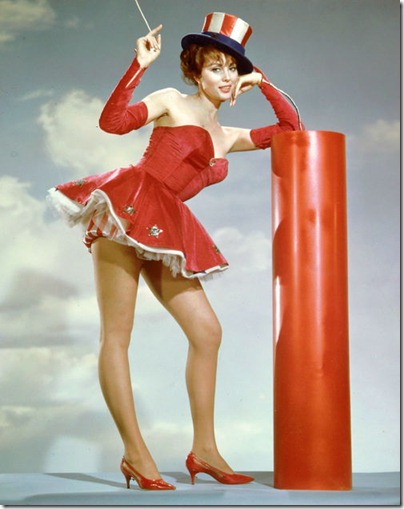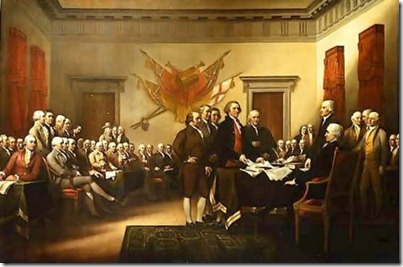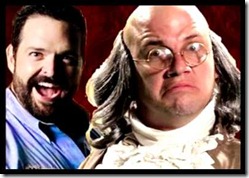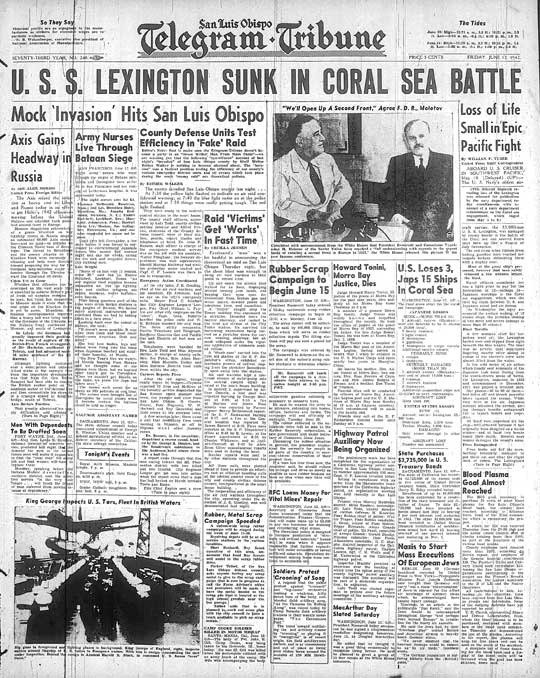Intermarkets' Privacy Policy
Donate to Ace of Spades HQ!
aceofspadeshq at gee mail.com
Buck:
buck.throckmorton at protonmail.com
CBD:
cbd at cutjibnewsletter.com
joe mannix:
mannix2024 at proton.me
MisHum:
petmorons at gee mail.com
J.J. Sefton:
sefton at cutjibnewsletter.com
First World Problems...
What An Incredible Time To Be Alive [Pete Bog]
Sunday Morning Book Thread - 12-21-2025 ["Perfessor" Squirrel]
Daily Tech News 21 December 2025
Saturday Night "Club ONT" December 20, 2025 [The 3 Ds]
A House Of DEI [Lex]
Hobby Thread - December 20, 2025 [Ornamental Rex]
Ace of Spades Pet Thread, December 20
Gardening, Home and Nature Thread, Dec 20
Jim Sunk New Dawn 2025
Jewells45 2025
Bandersnatch 2024
GnuBreed 2024
Captain Hate 2023
moon_over_vermont 2023
westminsterdogshow 2023
Ann Wilson(Empire1) 2022
Dave In Texas 2022
Jesse in D.C. 2022
OregonMuse 2022
redc1c4 2021
Tami 2021
Chavez the Hugo 2020
Ibguy 2020
Rickl 2019
Joffen 2014
maildrop62 at proton dot me
TBD
Overnight Open Thread (7-4-2012) - Independence Day Edition
Albeit a well meaning one showing the signing of the declaration of independence as it should have happened:
In fact, the oil-painting version of this event is wrong in almost every respect. The critical vote for independence actually took place on July 2, and John Adams wrote to his wife predicting that that date would "be celebrated, by succeeding Generations, as the great anniversary festival." A copy of the final document was sent to the printer on July 4, but that copy is lost, so we have no idea who signed it-possibly John Hancock, possibly others, possibly no one at all. Some of the 56 signatories of the document we have today weren't even present in July, so most historians accept delegate Thomas McKean's 1796 account of the signing: it didn't begin until August 2, when a new handwritten copy, one that had been ordered back on July 19, was presented to Congress. Signatures trickled in for years afterward, and some men who had been instrumental in the declaration's creation, like New York's Robert Livingston, never got to sign. McKean himself didn't add his name until sometimes between 1777 and 1781.
So How Did Fireworks Become America's Fourth of July Pastime?
Because John Adams fucking wanted it that way:
Before the Declaration of Independence was even signed, he envisioned fireworks as a part of the festivities. In a letter to Abigail Adams on July 3, 1776, he wrote that the occasion should be commemorated "with Pomp and Parade, with Shews, Games, Sports, Guns, Bells, Bonfires and Illuminations from one End of this Continent to the other from this Time forward forever more." The first commemorative Independence Day fireworks were set off on July 4, 1777. The Pennsylvania Evening Post wrote that in Philadelphia, "The evening was closed with the ring of bells, and at night there was a grand exhibition of fireworks (which began and concluded with thirteen rockets) on the Commons, and the city was beautifully illuminated." The paper noted that "Everything was conducted with the greatest order and decorum, and the face of joy and gladness was universal."
NYT, MSNBC Not Really Into The Independence Day Thang
Chris Rock Not Into 'White People's' Day Either
Because you never know when these kind of skillz might come in handy. Note this is a training flight and that includes use of the venerable E6B flight computer.
Despite their age-they have been flying since the 1950s-the B-52 Stratofortress is still the backbone of the US Air Force's strategic bombing force. These jet-powered beasts can deliver up to 70,000 pounds of weapons to any target around the globe. That includes nuclear weapons, of course.This video shows an entire training mission, from pre-flight checks to aerial refueling. It even includes one of those crazy low pass flybys.
This B-52 belongs to the 96th Bomb Squadron, taking off from Barksdale Air Force Base in Louisiana, on April 18, 2012.
The Epic Billy Mays vs Ben Franklin Rap Battle
Retro Ace: What was going on at the HQ this time in previous years
The 4th Of JulyAlert: Jackie Mackey Paisley Passey Spotting
No Sympathy, Really
Fold Up the Flags, We Must Atone
A Little Fourth of July Music
Charles Krauthammer Issues Conservative Bull: It's Okay for Ace of Spades HQ to Use the F-Bomb
The New Ace of Spades HQ Theme
Moar Yearbooks: Super Models in High School
Not ugly ducklings but not yet swans either. Probably had sharp elbows too.
Teh Tweet!
Tonight's post brought to you by 1942:
Notice: Posted by permission of AceCorp LLC. Please e-mail overnight open thread tips to maetenloch at gmail. Otherwise send tips to Ace.
Cicero (@cicero43): "[i]Wasn't Boar's Head brand the one that the FDA f ..."
[/i][/b]Clyde Shelton: "[i]Leavitt is 20-something. She should know better ..."
Idaho Spudboy: "Wasn't Boar's Head brand the one that the FDA foun ..."
Dash my lace wigs!: "I'm trying to figure out what we should have for t ..."
neverenoughcaffeine: "Pioneer Woman has the best sloppy joe recipe. ..."
Stephen Price Blair: "Ran across an interesting holiday-ish snack yester ..."
Pete Bog: "Linquica, calabrese or andouille for paella. US ch ..."
H.P. Lovecraft : "The turkraken -- can such things [i]be?[/i] ..."
Itinerant Alley Butcher: "I thought brains were very high in Cholesterol so ..."
neverenoughcaffeine: "We were gifted a wild goose. I will be preparing i ..."
The Clinton Foundation, rife with grift: " Cuba is the Haiti of the 21st Century. Posted b ..."
First World Problems...
What An Incredible Time To Be Alive [Pete Bog]
Sunday Morning Book Thread - 12-21-2025 ["Perfessor" Squirrel]
Daily Tech News 21 December 2025
Saturday Night "Club ONT" December 20, 2025 [The 3 Ds]
A House Of DEI [Lex]
Hobby Thread - December 20, 2025 [Ornamental Rex]
Ace of Spades Pet Thread, December 20
Gardening, Home and Nature Thread, Dec 20
Paul Anka Haiku Contest Announcement
Integrity SAT's: Entrance Exam for Paul Anka's Band
AllahPundit's Paul Anka 45's Collection
AnkaPundit: Paul Anka Takes Over the Site for a Weekend (Continues through to Monday's postings)
George Bush Slices Don Rumsfeld Like an F*ckin' Hammer
Democratic Forays into Erotica
New Shows On Gore's DNC/MTV Network
Nicknames for Potatoes, By People Who Really Hate Potatoes
Star Wars Euphemisms for Self-Abuse
Signs You're at an Iraqi "Wedding Party"
Signs Your Clown Has Gone Bad
Signs That You, Geroge Michael, Should Probably Just Give It Up
Signs of Hip-Hop Influence on John Kerry
NYT Headlines Spinning Bush's Jobs Boom
Things People Are More Likely to Say Than "Did You Hear What Al Franken Said Yesterday?"
Signs that Paul Krugman Has Lost His Frickin' Mind
All-Time Best NBA Players, According to Senator Robert Byrd
Other Bad Things About the Jews, According to the Koran
Signs That David Letterman Just Doesn't Care Anymore
Examples of Bob Kerrey's Insufferable Racial Jackassery
Signs Andy Rooney Is Going Senile
Other Judgments Dick Clarke Made About Condi Rice Based on Her Appearance
Collective Names for Groups of People
John Kerry's Other Vietnam Super-Pets
Cool Things About the XM8 Assault Rifle
Media-Approved Facts About the Democrat Spy
Changes to Make Christianity More "Inclusive"
Secret John Kerry Senatorial Accomplishments
John Edwards Campaign Excuses
John Kerry Pick-Up Lines
Changes Liberal Senator George Michell Will Make at Disney
Torments in Dog-Hell
The Ace of Spades HQ Sex-for-Money Skankathon
A D&D Guide to the Democratic Candidates
Margaret Cho: Just Not Funny
More Margaret Cho Abuse
Margaret Cho: Still Not Funny
Iraqi Prisoner Claims He Was Raped... By Woman
Wonkette Announces "Morning Zoo" Format
John Kerry's "Plan" Causes Surrender of Moqtada al-Sadr's Militia
World Muslim Leaders Apologize for Nick Berg's Beheading
Michael Moore Goes on Lunchtime Manhattan Death-Spree
Milestone: Oliver Willis Posts 400th "Fake News Article" Referencing Britney Spears
Liberal Economists Rue a "New Decade of Greed"
Artificial Insouciance: Maureen Dowd's Word Processor Revolts Against Her Numbing Imbecility
Intelligence Officials Eye Blogs for Tips
They Done Found Us Out, Cletus: Intrepid Internet Detective Figures Out Our Master Plan
Shock: Josh Marshall Almost Mentions Sarin Discovery in Iraq
Leather-Clad Biker Freaks Terrorize Australian Town
When Clinton Was President, Torture Was Cool
What Wonkette Means When She Explains What Tina Brown Means
Wonkette's Stand-Up Act
Wankette HQ Gay-Rumors Du Jour
Here's What's Bugging Me: Goose and Slider
My Own Micah Wright Style Confession of Dishonesty
Outraged "Conservatives" React to the FMA
An On-Line Impression of Dennis Miller Having Sex with a Kodiak Bear
The Story the Rightwing Media Refuses to Report!
Our Lunch with David "Glengarry Glen Ross" Mamet
The House of Love: Paul Krugman
A Michael Moore Mystery (TM)
The Dowd-O-Matic!
Liberal Consistency and Other Myths
Kepler's Laws of Liberal Media Bias
John Kerry-- The Splunge! Candidate
"Divisive" Politics & "Attacks on Patriotism" (very long)
The Donkey ("The Raven" parody)








